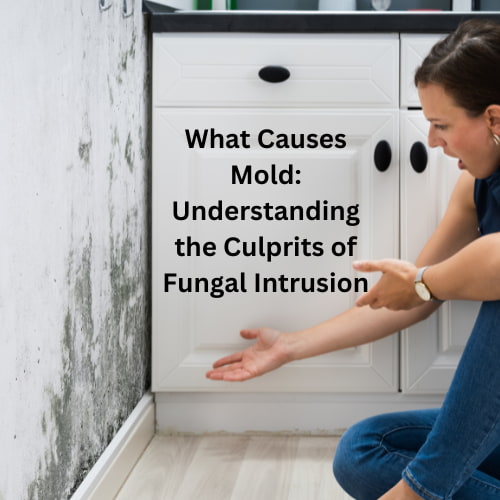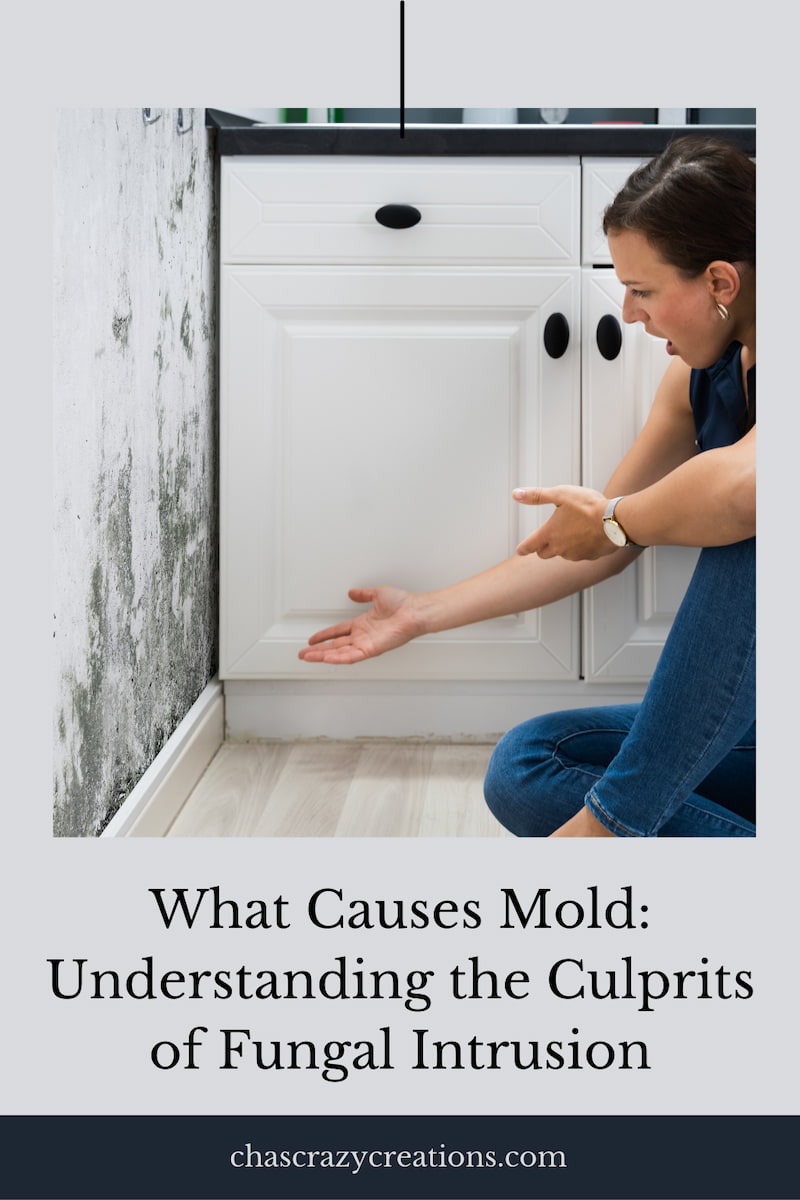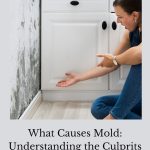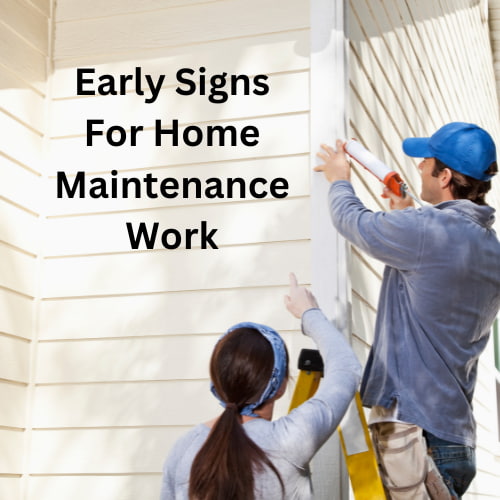What Causes Mold: Understanding the Culprits of Fungal Intrusion
Are you wondering what causes mold? Discover the insidious world of mold and unearth its hidden origins. This comprehensive blog post delves into the various factors that cause mold growth, providing essential insights on prevention and mitigation for a healthier indoor environment.
This post may contain affiliate links, I earn from qualifying purchases at no extra cost to you. Click here for my disclosure policy
Mold is an ever-present threat lurking in the shadows of our homes and workplaces. Its ability to silently spread and wreak havoc on our health and properties makes understanding its causes crucial. In this blog post, we will embark on a journey to explore the common causes of mold growth, empowering you with the knowledge to thwart this fungal intruder and safeguard your well-being.

What Causes Mold:
Table of Contents
Moisture and Humidity:
One of the primary ingredients for mold growth is moisture. We’ll delve into how elevated humidity levels and excessive moisture create the perfect breeding ground for mold spores. From hidden water leaks to condensation buildup, we’ll uncover the common sources of moisture that enable mold to thrive. Moreover, you’ll find practical tips on how to maintain optimal indoor humidity levels and control moisture to prevent mold infestations.
Poor Ventilation:
Ventilation plays a crucial role in mitigating mold risk. We’ll explain the pivotal connection between inadequate airflow and the accumulation of moisture, which ultimately leads to mold growth. From bathrooms to basements, we’ll discuss strategies for improving ventilation in various areas of your living space to keep mold at bay.
Water Damage and Flooding:
Water damage and flooding can be disastrous for mold intrusion. We’ll explore the severe impact of these events on mold infestations and how prompt and thorough water damage restoration is vital to preventing mold colonization. You’ll also find valuable tips on dealing with water damage and practical measures to prevent future occurrences.
Building Materials and Construction:
Certain building materials can unwittingly facilitate mold growth if not designed or installed correctly. We’ll shed light on the specific materials that are susceptible to mold, such as drywall and insulation, and how they can become hotspots for mold infestations. Moreover, we’ll suggest alternative materials and construction practices that can minimize mold risk and create a healthier living environment.
Lack of Regular Maintenance:
Regular maintenance is the unsung hero of mold prevention. We’ll emphasize the significance of timely upkeep tasks in creating an inhospitable environment for mold growth. Whether it’s fixing leaks, cleaning gutters, or maintaining your HVAC system, our checklist of essential maintenance activities will help you keep mold at bay.
Indoor Air Quality:
Indoor air quality and mold growth are intricately linked. We’ll delve into the connection between poor air quality and mold infestations, highlighting how pollutants and airborne particles can contribute to mold growth. Armed with this knowledge, we’ll provide you with practical tips for improving indoor air quality and reducing mold risk.
Clutter and Poor Organization:
Did you know that clutter can inadvertently foster mold growth? We’ll explain how an unorganized living space can obstruct proper airflow, leading to stagnant pockets of moisture where mold thrives. Learn the importance of decluttering and organization for effective mold prevention and discover practical strategies to keep your living space mold-free.
Personal Habits:
Sometimes, it’s our daily habits that unknowingly aid mold growth. We’ll explore how seemingly innocent actions like drying clothes indoors or neglecting spills can create a breeding ground for mold. By developing mold-conscious habits, you can significantly reduce the risk of mold infestations in your home.
Understanding the root causes of mold growth is paramount in the battle against this stealthy invader. By addressing moisture issues, improving ventilation, dealing with water damage promptly, and maintaining your living space, you can create an environment hostile to mold’s growth and protect your health. Armed with the insights provided in this blog post, you can confidently embark on a journey toward a healthier, mold-resistant living space. Remember, knowledge is power, and in this case, it is the power to conquer mold.
Shop any of these stores and I receive a small commission at no cost to you.
 Echo Dot (4th Gen, 2020 rel...Shop on Amazon
Echo Dot (4th Gen, 2020 rel...Shop on Amazon Apple AirTagShop on Amazon
Apple AirTagShop on Amazon Amazon Fire TV Stick, sharp...Shop on Amazon
Amazon Fire TV Stick, sharp...Shop on Amazon
How To Prevent Mold In Your Home
Mold isn’t just a problem because it looks bad; it’s a problem because it can pose health risks too – plus it can actually cause damage to your home. Preventing mold growth is therefore extremely important if you want to have a nice place to live that won’t cause you any problems or any harm. With that in mind, keep reading to find out how to prevent mold in your home as much as you can.
Proper Ventilation
Good ventilation in your home is crucial if you want to prevent a mold problem because it gives you proper airflow. Stagnant air and high humidity levels create the perfect conditions for mold to thrive, so taking the time to think about your ventilation and make sure it’s working in the way it should make a big difference.
One good way to do this is to use exhaust fans or extraction fans in your bathroom, kitchen, and any other areas that have a lot of humidity. These fans draw the moisture out of the air, which means there’s less chance of mold taking hold. Plus, keep your windows open if the weather is good enough to allow fresh air to circulate around your home. You may also consider using a dehumidifier, especially in the basement.
Foundation Repair
If your foundation is cracked or damaged, this could be letting moisture into your home, which, as we’ve seen, leads to mold. This is why it’s important to schedule regular checks of your foundations – perhaps once a year. When you do this, the experts can look at your foundations and let you know whether there are any problems.
The great thing about using a good foundation repair company to do this is that any repairs that are needed will be done right away (with your consent, of course), helping you to keep your home mold-free. The longer you leave these repairs, the more chance of mold you’ll have, so it’s wise to do something about it sooner rather than later.
Proper Insulation
Missing or bad-quality insulation can be a big problem when it comes to mold in your home. When your insulation isn’t good enough (or isn’t there at all, which can be the case sometimes – you won’t know until you check), it can lead to condensation forming on your walls and ceilings, and that equals mold.
To fix the issue, you need to properly insulate your home to prevent cold spots that cause condensation and the problems that follow. Pay special attention to lofts, basements, and exterior walls. To make this even better, properly insulated homes keep the indoor temperature regulated, making it more comfortable and saving you money on your energy bills.
Regular Cleaning And Maintenance
Regular cleaning and maintenance can go a long way in preventing mold growth, as strange as that might seem. Dust, dirt, organic matter, and so on can provide the right nutrients for mold, which is just one of the reasons why keeping your home clean is so important.
Put a regular cleaning schedule in place that always includes the areas that might be most susceptible to mold, like the bathroom and kitchen. Wipe down surfaces to remove dust and dirt, and always dry any wet spills or damp areas as soon as possible.
Mold and mildew are both fungi. Mildew is flat and usually grey, white or brown. Mold usually has a fuzzy appearance and is usually black, green or red.
Health problems from mold irritants can present as cough, scratchy throat, sneezing, headache or asthma just to name a few.
Mold removal from hard surfaces can be done with undiluted white vinegar or a bleach solution. If you are sensitive to mold or have mold allergies consider wearing a mask, gloves and perhaps goggles when you are cleaning. Depending on the type of mold you are dealing with, mold remediation may need to be done by professionals.









